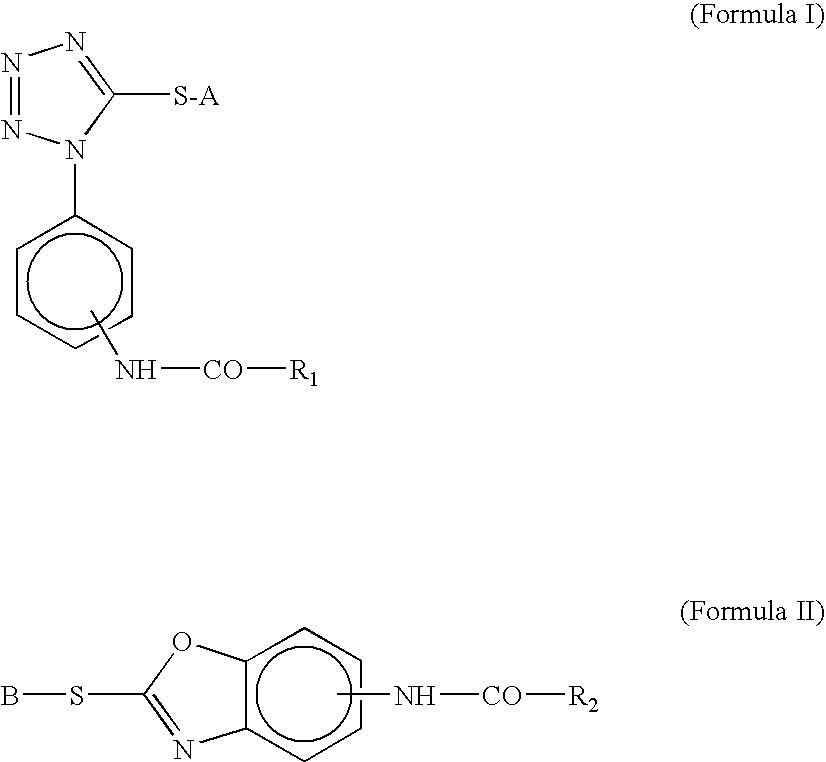Silver Halide Color Photosensitive Material and Method of Processing the Same
- Summary
- Abstract
- Description
- Claims
- Application Information
AI Technical Summary
Benefits of technology
Problems solved by technology
Method used
Image
Examples
example 1-1
Preparation of Blue-Sensitive Layer Emulsion BH-1
[0180]Using a method of simultaneously adding silver nitrate, sodium chloride, and potassium bromide (0.5 mol % per mol of the finished silver halide) mixed into stirring deionized distilled water containing deionized gelatin, high silver chloride cubic grains were prepared. In this preparation, at the step of from 65% to 80% addition of the entire silver nitrate amount, K2[IrCl5(5-methylthiazole)] was added. At the step of from 82% to 90% addition of the entire silver nitrate amount, K4[Fe(CN)6] was added. Further, K2[IrCl5(H2O)] and K[IrCl4(H2O)2] were added at the step of from 83% to 89% addition of the entire silver nitrate amount. Potassium iodide (0.27 mol % per mol of the finished silver halide) was added, with vigorous stirring, at the step of completion of 94% addition of the entire silver nitrate amount. The thus-obtained emulsion grains were monodisperse cubic silver bromochloride grains having a side length of 0.50 μm, a v...
example 1-2
Preparation of Blue-Sensitive Silver Halide Emulsion Grains BH-4
[0243]To a 2% aqueous solution of lime-processed gelatin, 1.2 g of sodium chloride was added and adjusted to pH 4.3 by addition of an acid. This aqueous solution was admixed with an aqueous solution containing 0.025 mole of silver nitrate and an aqueous solution containing sodium chloride and potassium bromide in the total amount of 0.025 mole at 41° C. with vigorous stirring. Subsequently thereto, an aqueous solution containing 0.005 mole of potassium bromide was added, and then an aqueous solution containing 0.125 mole of silver nitrate and an aqueous solution containing 0.12 mole of sodium chloride were added. The resulting solution was heated to the temperature of 71° C., and admixed with an aqueous solution containing 0.9 mole of silver nitrate, an aqueous solution containing 0.9 mole of sodium chloride, and an iridium compound, K2[IrCl5(5-methylthiazole)], in an amount of 2.5×10−7 mole to the total amount of silve...
example 2-1
Preparation of Blue-Sensitive Layer Emulsion BH-11
[0249]Using a method of simultaneously adding silver nitrate, sodium chloride, and potassium bromide (0.5 mol % per mol of the finished silver halide) mixed into stirring deionized distilled water containing deionized gelatin, high silver chloride cubic grains were prepared. In this preparation, at the step of from 60% to 80% addition of the entire silver nitrate amount, K2[IrCl5(5-methylthiazole)] was added. At the step of from 80% to 90% addition of the entire silver nitrate amount, K4[Fe(CN)6] was added. Further, K2[IrCl5(H2O)] and K[IrCl4(H2O)2] were added at the step of from 83% to 88% addition of the entire silver nitrate amount. Potassium iodide (0.27 mol % per mol of the finished silver halide) was added, with vigorous stirring, at the step of completion of 94% addition of the entire silver nitrate amount. The thus-obtained emulsion grains were monodisperse cubic silver bromochloride grains having a side length of 0.50 μm, a ...
PUM
 Login to View More
Login to View More Abstract
Description
Claims
Application Information
 Login to View More
Login to View More - R&D
- Intellectual Property
- Life Sciences
- Materials
- Tech Scout
- Unparalleled Data Quality
- Higher Quality Content
- 60% Fewer Hallucinations
Browse by: Latest US Patents, China's latest patents, Technical Efficacy Thesaurus, Application Domain, Technology Topic, Popular Technical Reports.
© 2025 PatSnap. All rights reserved.Legal|Privacy policy|Modern Slavery Act Transparency Statement|Sitemap|About US| Contact US: help@patsnap.com



